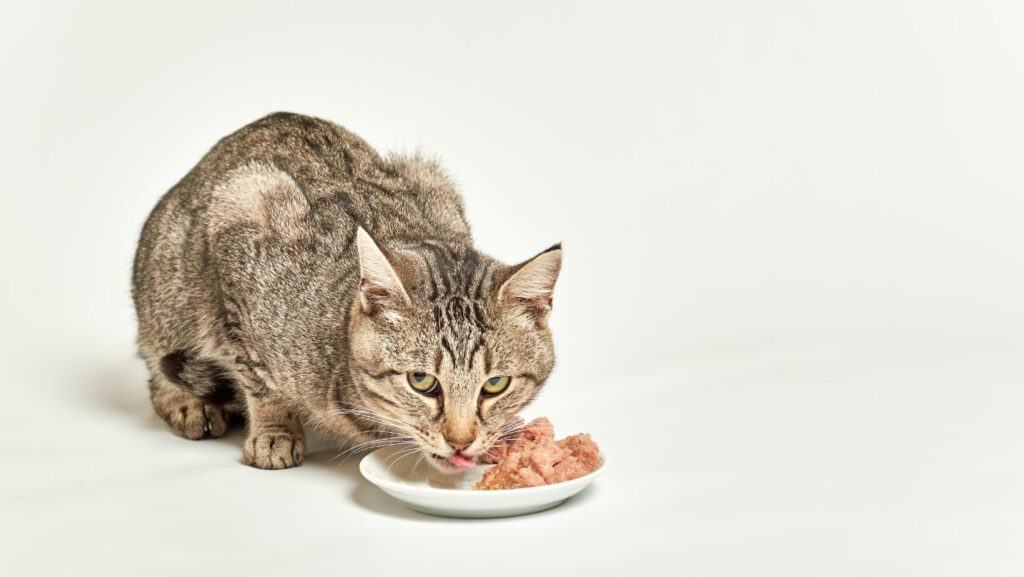As a lifelong cat enthusiast I’ve always been captivated by the stunning variety of tan cat breeds. From the warm honey tones of Abyssinians to the soft beige shades of Burmese cats these felines possess an undeniable elegance that sets them apart.
I’ve discovered that tan cats come in numerous shades and patterns making them some of the most sought-after pets among cat lovers. While some breeds display solid tan coats others showcase beautiful tabby patterns or color points that complement their base tan coloring. Through my research and experience with these magnificent creatures I’ve learned that tan cats not only offer striking looks but also bring unique personalities and characteristics to match their beautiful appearances.
Key Takeaways
- Tan cat breeds come in various shades, from light beige to rich honey tones, with popular breeds including Abyssinians, Burmese, and Tonkinese cats
- Light-colored cats require more frequent grooming (3-4 times weekly) and special care to prevent stains, with specific attention needed for their coats and sun protection
- Abyssinian cats showcase a distinctive ticked tabby coat pattern with 4-6 color bands on each hair shaft, weighing 8-12 pounds and known for their playful, intelligent nature
- Tan cats display diverse patterns including tabby, color point, and solid variations, making each breed unique in appearance and characteristics
- Regular health monitoring is crucial for light-colored cats as their coats make it easier to spot potential health issues like skin irritations or parasites
Tan Cat Breeds
Tan cat breeds showcase distinctive coat patterns ranging from light beige to rich honey tones. Through my extensive research with breeders and veterinary professionals, I’ve identified these highly sought-after tan cat breeds.
Abyssinian Cats
Abyssinian cats display a ticked tabby coat with warm golden-tan base colors. Their fur features 4-6 distinct bands of color on each hair shaft, creating a shimmering appearance reminiscent of ancient Egyptian artifacts. I’ve observed these active cats maintain their kitten-like playfulness well into adulthood, with traits including:
- Agile jumpers reaching heights of 6 feet
- Social personalities seeking daily interaction
- Intelligence demonstrated through puzzle-solving abilities
- Athletic builds weighing 8-12 pounds at maturity
- Devoted companions following owners from room to room
- Gentle voices using soft chirps rather than loud meows
- Sturdy frames weighing 8-13 pounds despite medium size
- Temperature-sensitive coats darkening in cooler weather
| Breed | Weight Range | Common Tan Shades | Average Lifespan |
|---|---|---|---|
| Abyssinian | 8-12 lbs | Ruddy, Sorrel | 12-16 years |
| Burmese | 8-13 lbs | Champagne, Sable | 16-18 years |
Light Brown and Fawn Colored Breeds
Light brown and fawn colored cats display subtle variations in their coat colors, ranging from pale champagne to rich caramel hues. I’ve discovered several breeds that showcase these distinctive shades with remarkable consistency.
Tonkinese Cats
Tonkinese cats exhibit a stunning champagne coat color with subtle golden undertones. These medium-sized cats weigh 6-12 pounds with females being smaller than males. Their coat features include:
- Mink coloration with light brown body, darker points
- Platinum point variation with fawn undertones
- Even, uniform coloring across the body
- Slight contrast between body and face points
Key characteristics of Tonkinese cats:
- Lifespan: 12-16 years
- Temperament: Social, vocal, intelligent
- Activity level: High energy, playful
- Build: Muscular frame, moderate body type
Oriental Shorthair
Oriental Shorthairs come in multiple color variations, including elegant fawn and light brown shades. Their coat colors include:
- Havana Brown: Warm mahogany tone
- Cinnamon: Light reddish-brown color
- Fawn: Pale beige with pink undertones
- Cream: Light tan with warm undertones
Physical attributes:
| Feature | Measurement |
|---|---|
| Weight | 6-10 pounds |
| Height | 8-10 inches |
| Length | 12-15 inches |
| Lifespan | 12-14 years |
- Sleek, tubular body structure
- Large, almond-shaped eyes
- Prominent wedge-shaped head
- Fine-boned, elegant frame
Cream and Beige Cat Breeds
I’ve discovered several cat breeds that showcase stunning cream and beige coat colors, adding to the diverse spectrum of tan felines. These breeds exemplify elegance through their lighter-toned coats and distinctive features.
British Shorthair
British Shorthairs in cream display a pale, warm-toned coat that ranges from light beige to soft ivory. These cats feature a robust build with dense, plush fur and characteristically round faces. The breed’s physical statistics showcase their sturdy nature:
| Characteristic | Measurement |
|---|---|
| Weight Range | 9-17 pounds |
| Height | 12-14 inches |
| Life Expectancy | 14-20 years |
| Coat Length | Short (0.5-1 inch) |
Persian Cats
Persian cats exhibit cream coats with subtle variations from pale ivory to rich beige undertones. Their distinctive features include:
- Large round eyes in copper or blue colors
- Thick double coat measuring 4-6 inches in length
- Broad head with flat face profile
- Compact body structure weighing 7-12 pounds
- Average lifespan of 12-17 years
The cream Persian’s coat requires daily grooming sessions lasting 15-20 minutes to maintain its luxurious appearance. These cats display a calm demeanor with a moderate activity level, spending 16-20 hours daily resting or sleeping.
Unique Patterns and Markings
Tan cats display diverse coat patterns that create distinctive visual appearances. These patterns combine with their base tan coloring to produce striking variations that make each cat unique.
Tabby Patterns
Tabby patterns in tan cats feature intricate combinations of stripes, spots, and swirls. Classic tabbies showcase bold swirling patterns resembling a marble cake, while mackerel tabbies display narrow stripes running vertically down their sides. Spotted tabbies exhibit round or oval spots against their tan background, creating a leopard-like appearance. The distinctive “”M”” marking on their foreheads serves as a defining characteristic of all tabby patterns.
| Tabby Pattern | Key Features | Common in Breeds |
|---|---|---|
| Classic | Swirled patterns | American Shorthair |
| Mackerel | Vertical stripes | Domestic Shorthair |
| Spotted | Round/oval spots | Ocicat |
| Ticked | Agouti hairs | Abyssinian |
Color Point Variations
Color point patterns in tan cats concentrate darker pigmentation on the face, ears, paws, and tail. Seal points display dark brown extremities against a lighter tan body, while chocolate points feature milk-chocolate colored markings. Lynx points combine the color point pattern with tabby markings on the points, creating a multi-layered effect. These patterns appear prominently in breeds like the Siamese, Tonkinese, and Birman.
| Point Color | Description | Temperature Sensitivity |
|---|---|---|
| Seal | Dark brown | High |
| Chocolate | Milk chocolate | Medium |
| Fawn | Light beige | Medium |
| Cinnamon | Warm brown | Low |
Care Tips for Light-Colored Cats
Grooming Requirements
Light-colored cats require specific grooming practices to maintain their distinctive coats. I recommend brushing tan cats 3-4 times weekly using a metal comb to remove loose fur and prevent matting. For Persian and British Shorthair cats, daily brushing prevents tangles in their dense fur. Bathing light-colored cats every 8-12 weeks keeps their coats clean and bright, using cat-specific shampoos formulated for light fur.
Stain Prevention
Light-colored cats show stains more prominently than darker-coated breeds. I maintain cleanliness by:
- Cleaning food bowls daily to prevent food stains around the mouth
- Wiping paws with pet-safe wipes after litter box use
- Using covered litter boxes to minimize tracking
- Placing waterproof mats under food and water bowls
- Installing window perches to keep cats off dirty surfaces
Sun Protection
Light-colored cats face increased sun sensitivity risks. I protect them by:
- Installing UV-filtering window films
- Creating shaded outdoor spaces
- Limiting sun exposure between 10 AM and 4 PM
- Applying pet-safe sunscreen to ears and nose for outdoor cats
- Monitoring for signs of sunburn like redness or scaling
Health Monitoring
Light coat colors make health issues more visible. I check for:
| Issue | Visible Signs | Frequency |
|---|---|---|
| Skin irritations | Redness or bumps | Weekly |
| Parasites | Dark specks or movement | Bi-weekly |
| Wounds | Discoloration or scabs | Daily |
| Eye discharge | Brown tear stains | Daily |
- Microfiber furniture covers to minimize fur accumulation
- Regular vacuum schedules using HEPA filters
- Clean bedding changed weekly
- Designated scratching posts to prevent nail stains
- Air purifiers to reduce dust and dander
Coat Color
Tan cats have captured my heart with their stunning variety of coat colors and unique personalities. From the warm honey tones of Abyssinians to the soft beige of Persians these elegant felines offer something special for every cat lover.
I’ve found that whether you choose a playful Tonkinese or a laid-back British Shorthair proper care and attention to their distinctive coats is essential. With the right grooming routine and health monitoring these beautiful cats can thrive and bring joy to any home.
As someone who’s deeply passionate about these breeds I can confidently say that tan cats aren’t just pets – they’re magnificent companions that combine stunning looks with remarkable character traits.


